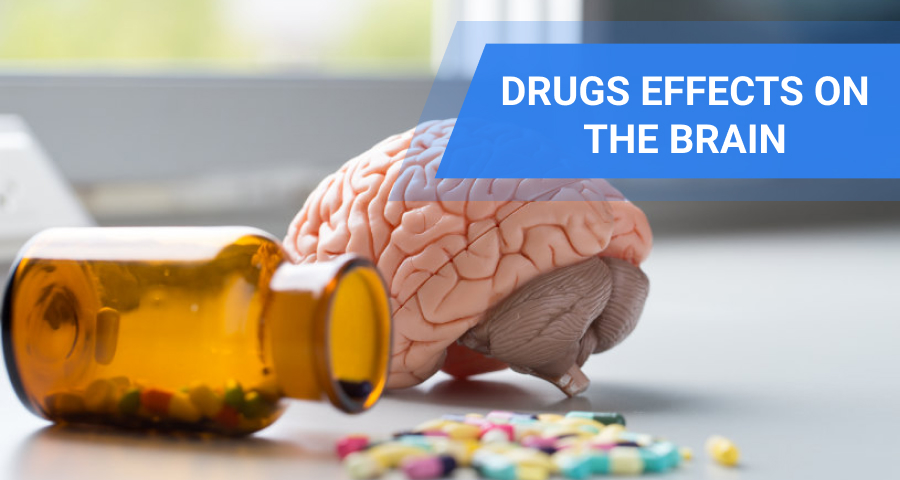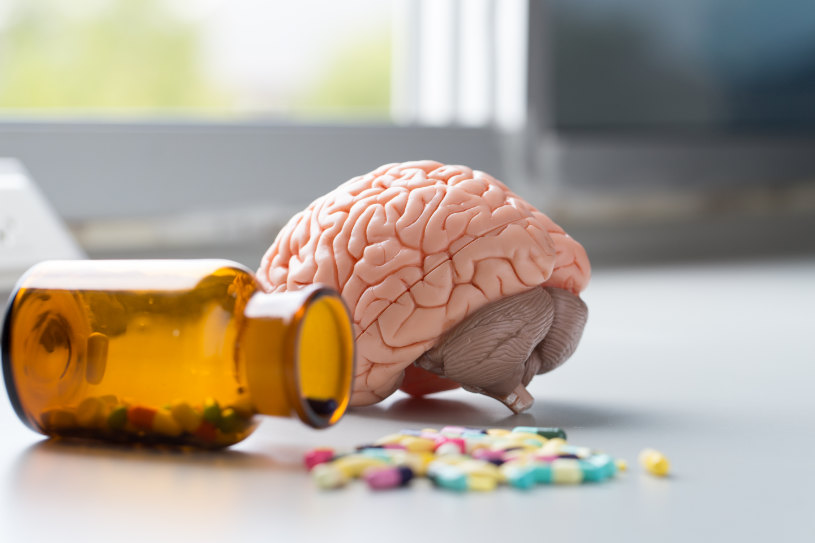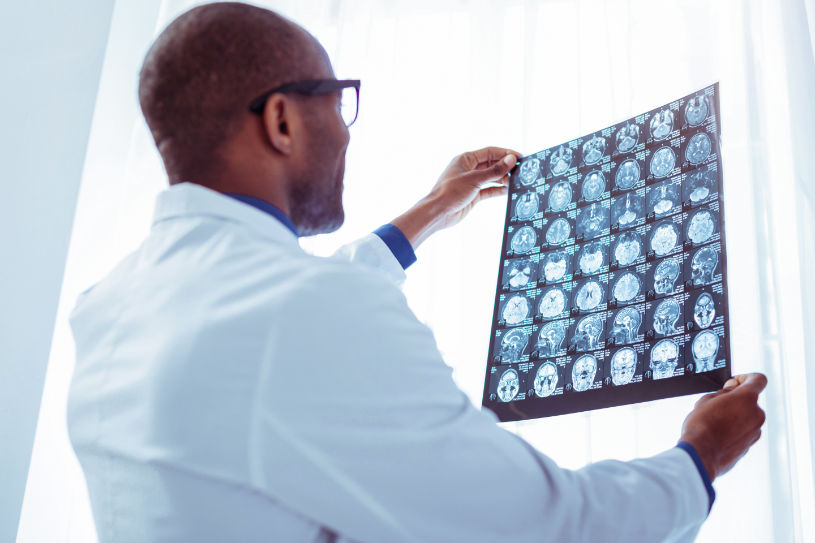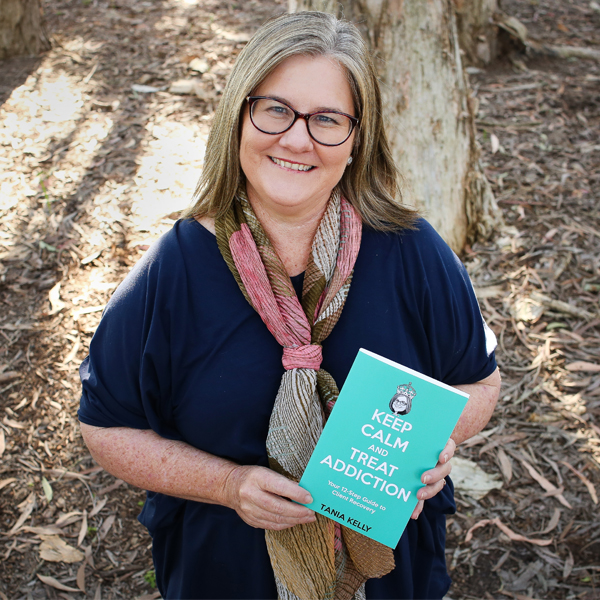
The drugs that are used today have been part of human existence for centuries. Take opiates and cannabis for example the opium extract from the seeds of Papaver somniferum had been used for medicinal purposes for at least 3 millennia and references to medicinally used cannabis had been found in ancient Chinese herbal texts. Thus humans have been aware of the connection between various drugs and the brain for a very long time.
Table Of Contents:
Unfortunately, in more recent times, as new drugs were discovered and new routes of administration developed, behavioral, physical, and psychological problems related to substance use emerged. In the modern world, addiction has a significant impact on people, families, communities, and societies by causing tens of thousands of deaths. It is estimated by the National Survey on Drug Use and Health (NSDUH) that 7.7% or 19.3 million people aged 18 or older struggled with drug addiction. Therefore, it is immensely important to have information about these topics to prevent substance use and to help those in recovery from addiction.
This article on addiction and the brain focuses on the basic neurobiology and neuropharmacology of addiction by discussing how different drugs affect the Central Nervous System and what causes addiction in the brain. Also, the topics of possible brain damage from drugs and the differences between the addicted brain vs. normal brain will be touched upon.
Addicted Brain vs Normal Brain: The Mechanism of Addiction
Understanding the neurobiological mechanisms underlying addiction and the brain changes that occur as a consequence can be quite difficult because it is still not clear what exact neurophysiological processes are involved in the development and progression of addictive disorders. One prevalent theory that attempts to explain the neurobiological mechanism of addiction is the Dopamine hypothesis and along with it, the phenomenon of synaptic plasticity. With continued use, the interactions between addictive drugs and the brain cause alterations within the synaptic structures of the brain that generate strong but inappropriate signals that hijack the reward system and lead to pathologic reinforcement.
Although there are exceptions, effects of drug addiction are thought to activate the mesolimbic dopamine system in one way or another which reinforces drug-using behavior. Meaning that the “good” or “pleasurable” feelings associated with the use of an addictive drug, trigger the mesolimbic dopaminergic system, namely the Ventral Tegmental Area (VTA), to secrete dopamine and to strengthen excitatory synapses on dopaminergic neurons which will “positively reinforce” the drug-using behavior. And as a consequence, drug use becomes compulsive and automatic.
Although this hypothesis does explain the mechanism of addiction when dealing with the interaction of dopamine-acting drugs and the brain, it fails to explain what causes addiction in the brain when there is an absence of dopamine or when the salient stimuli experienced is not rewarding but instead aversive such as with the phenomena of tolerance, withdrawal, and physiological dependence which have been touched upon in numerous other articles. Thus, much remains to be learned about the detailed mechanism of addiction and the brain changes that differentiate the addicted brain vs normal brain as well as about exactly how do drugs affect the brain and what drugs do to your brain circuitry to bring about substance addiction.

Drugs And The Brain: How Do Drugs Work There?
The field of neuropharmacology deals with all different types of substances that are active within the central nervous system. There are hundreds of different drugs belonging to a broad array of classes and all of these substances have their own mechanisms of action(MOA) within the brain and mediate a truly vast array of effects, for example there are some drugs that cause ed (erectile dysfunction). Below is a brief overview of some of the classes of drugs that are active within the central nervous system:
Antihistamines
Antihistamines are a group of drugs that are used to treat histamine-mediated conditions. The centrally active H1-Histamine blockers include drugs such as Diphenhydramine, Cetirizine, Cyclizine, Doxylamine, Hydroxyzine, and Meclizine. These drugs antagonize the ability of Histamine to increase vascular permeability and cause tissue swelling. As a result of their MOA, they are primarily employed in allergic conditions.
Stimulants
These drugs are a broad group of both legal and illegal drugs that “stimulate” and increase the activity of the central nervous system. Stimulants can be used for performance enhancement; medical benefits in conditions such as attention deficit hyperactivity disorder(ADHD), Narcolepsy, Binge Eating Disorder (BED), etc., and even for illegal recreational purposes.
Some Stimulant Drugs Include:
- Caffeine inhibits adenosine receptors through which inhibits the sensation of drowsiness, and increased energy levels.
- Amphetamines increase the amount of dopamine and norepinephrine within the CNS through a variety of mechanisms. Elevated levels of these monoamines lead to increased energy levels, euphoria, increased libido, and higher cognition.
- Methylphenidate is a drug that blocks the reuptake of dopamine and norepinephrine leading to their increased levels.
- Cocaine blocks the dopamine transporter protein and increases dopamine levels within the synaptic cleft.
Many other types of synthetic stimulant drugs also work along the same pathways as the drugs mentioned above. Furthermore, some stimulant drugs can cause difficulty breathing.
Antidepressants
Antidepressants are yet another huge group of drugs which include several classes such as Tricyclic Antidepressants (TCA Amitriptyline), Atypical Antidepressants(Bupropion), Specific Serotonin Reuptake Inhibitors (SSRIs Citalopram, Escitalopram, Fluoxetine, Paroxetine, Sertraline), Serotonin and Norepinephrine Reuptake Inhibitors (SNRIs Atomoxetine, Desvenlafaxine, Duloxetine, Levomilnacipran, Milnacipran), and Monoamine Oxidase Inhibitors (MAOIs). Although all antidepressants work in slightly different ways, they essentially all modulate mood and behavior by increasing the levels of serotonin, norepinephrine, or dopamine by preventing their reuptake or metabolism. Some antidepressants are also known to cause liver damage.
Sedative-Hypnotics
Sedative hypnotics include a vast array of medications spanning multiple other groups. However, most commonly sedative-hypnotics can refer to Benzodiazepines, Barbiturates, and Z-drugs. All these medications, as a group, increase GABA’s inhibitory effects within the CNS and as a result induce a state of anxiolysis, sedation, and hypnosis.
Hallucinogens
Hallucinogens include LSD, mescaline, and psilocybin. These drugs are psychotomimetic and have the ability to alter consciousness and perception of the surrounding world. Hallucinogens work by binding to presynaptic serotonin receptors and increasing the release of Glutamate in the cortex.
Muscle Relaxants
Skeletal muscle relaxants are yet another group of unrelated compounds that include several drugs which have mechanisms of action. For the sake of simplicity, they can be broken down into:
- Antispastic Muscle Relaxants which work directly on the spinal cord or on another group of muscle to reduce muscle tonus and involuntary spasms. These drugs include Baclofen and Dantrolene.
- Antispasmodic Muscle Relaxants include drugs such as carisoprodol, cyclobenzaprine, metaxalone, and methocarbamol. These drugs act on the brain stem and the spinal cord to relieve muscle pain caused by injury.
Other medication groups such as Benzodiazepines and Tizanidine can also be employed as skeletal muscle relaxants.
Opioids
An Opioid is an umbrella term that represents a range of natural(i.e morphine, codeine) and synthetic (i.e fentanyl) drugs that bind to either mu, kappa, or delta-opioid receptors within the central and peripheral nervous systems as well as in the GI tract. By binding with their respective receptors opioid substances can modulate several physiologic functions such as pain, mood, stress, gastrointestinal motility, and respiration. These drugs are also known to cause kidneys and liver failure.
Additionally, the majority of the substances active within the central nervous system have variable potential in causing addiction in people. For some of them, the potential may be negligible, while for others it can be a major concern during their use.
Why Are Some Drugs Addictive: The Pleasure Issue
Drugs are addictive because of the pleasant or euphoric effects that they can induce through their various MOAs. Once these enjoyable effects are experienced, our brains positively reinforce it and release a surge of dopamine which mediates a cascade of events that eventually lead the user to repeat drug use to experience pleasure again. To simplify it even more, a drug causes a pleasurable feeling which is viewed, in the short term, as a positive experience and as such is rewarded by the brain. This pleasure-reward circuit continues until the behavior becomes habitual and beyond the control of an individual user.
The Most Common Drugs of Addiction in the United States Include:
- Marijuana
- Prescription stimulants
- Opioids
- Methamphetamines
- Prescription pain medication
- Heroin
- Cocaine
- Prescription sedatives
However, it is important to keep in mind that there are numerous other drugs of abuse on which users can become physiologically dependent.

Brain Damage From Drugs: Is It Possible?
As already mentioned, the interaction between addictive drugs and the brain can alter the neuronal circuitry, but this cannot be described as causing brain damage. In terms of what drugs do to your brain that is “damaging”, the field of neurotoxicology has to be consulted. Although this is a vast topic, the short answer is yes, addictive drugs such as alcohol, heroin, amphetamines, marijuana, opioids, inhalants, cocaine, and others can all cause damage to a user’s brain both directly and indirectly as well as in the cases of both acute intoxication and chronic misuse. There are also some drugs that cause heart attack.
Is Addiction A Brain Disease: Who Is At Risk?
The question of whether addiction is a brain disease is quite controversial to answer, as opinions regarding it are highly variable. However, from what has been discussed in this article about defining addiction as a chronic illness and about what drugs do to your brain over time, making drug use a habitual, automatic behavior, it is quite clear that addiction is a brain disease and does not stem from a moral weakness, a lack of willpower or an unwillingness to stop.
As with all medical conditions, identifying a single cause or a risk factor is often difficult. Furthermore, it is highly unlikely that a single factor can account for the development of drug addiction in a patient. Rather, predisposition to drug addiction is multifactorial and the risk grows with an increase in the number of these predisposing factors a user will have.
Bellow Are Offered All the Possible Risk Factors which Could Predispose to Drug Addiction:
Co-Occurring Disorders
- Conduct disorder
- ADHD
- MDD
- Bipolar disorder
- Anxiety disorder
- Schizophrenia
- PTSD
Familial and Peer Risk Factors:
- A Parent or 1st degree relative with a history of drug or alcohol use
- Marital or family conflict
- Use among siblings
- Recent trauma
- Substance-using peers
Individual Risk Factors:
- Difficult temperament/Irritability/Aggression
- Motor, language, and cognitive impairments
- Poor social skills and antisocial behavior
- Lack of self and impulse control and sensation-seeking
Community Risk Factors
- Law and norms about alcohol and drug use
- Availability of the drug
As one can see there are numerous risk factors involved. The interplay between factors can predispose almost any individual to early use of substances of abuse. Additionally, co-occurring mental disorders seem to have a prevalence in cases of substance abuse in people. However, whether the onset of addiction preceded the onset of mental disorders, or vice versa is quite difficult to establish for all people. In America alone, in 2019 9.5 million people aged 18 and older suffered from both drug addiction and a mental illness.
Brain Therapies: Addiction And Drug Abuse Treatment Options
There are numerous addiction and substance abuse treatment options available to individuals at various recovery centers. These treatment and recovery programs offered at recovery centers have specific characteristics that are aimed at specific types of drug addiction and are not universally applicable to all people. Rather, the treatment modality should be adjusted to the specific needs and goals of the patients.
Regardless, Treatment Modalities Can Be Broadly Grouped Into:
- Detoxification programs that are aimed at merely controlling acute withdrawal and consequences of recent drug use
- Programs that rely heavily on pharmacological interventions
- Psychosocial Interventions and Cognitive Behavioral Therapy
- Therapeutic Community Principles and/or group psychotherapy
Regardless of the treatment modality chosen and whether the chosen form of therapy is performed in an inpatient or outpatient center, the broader goals of treatment should ultimately involve achieving and maintaining long-term abstinence in people struggling with addiction.
Hope Without Commitment
Find the best treatment options. Call our free and confidential helpline
Most private insurances accepted
Related Topics
- Drugs Effects Of Abuse
- Drugs Effects On Heart
- Drugs Effects On Liver
- Drugs Effects On Kidneys
- Drugs Effects On Hypersexuality
- Drugs Effects On Lungs
Find Drug Rehabilitation Centers Near You Anywhere In the US
Addiction Resource team has compiled an extensive list of the top drug rehabilitation facilities around the country. Use our locator tool to find the best centers near you.
Page Sources
- Alozai Uu, Sharma S. Drug and Alcohol Use. [Updated 2021 Jul 24]. In: StatPearls [Internet]. Treasure Island (FL): StatPearls Publishing; 2021 Jan. https://www.ncbi.nlm.nih.gov/books/NBK513263/
- Bustamante, J. (2021, September 26). Drug Abuse Statistics. NCDAS. https://drugabusestatistics.org
- Covell T, Siddiqui W. Korsakoff Syndrome. [Updated 2021 Jul 10]. In: StatPearls [Internet]. Treasure Island (FL): StatPearls Publishing; 2021 Jan. https://www.ncbi.nlm.nih.gov/books/NBK539854/
- Farzam K, Faizy RM, Saadabadi A. Stimulants. [Updated 2021 Aug 6]. In: StatPearls [Internet]. Treasure Island (FL): StatPearls Publishing; 2021 Jan. https://www.ncbi.nlm.nih.gov/books/NBK539896/
- Farzam K, Sabir S, O'Rourke MC. Antihistamines. [Updated 2021 Jul 18]. In: StatPearls [Internet]. Treasure Island (FL): StatPearls Publishing; 2021 Jan. https://www.ncbi.nlm.nih.gov/books/NBK538188/
- Fluyau D, Charlton TE. Addiction. [Updated 2021 May 15]. In: StatPearls [Internet]. Treasure Island (FL): StatPearls Publishing; 2021 Jan. https://www.ncbi.nlm.nih.gov/books/NBK549783/
- Grewal N, Huecker MR. Opioid. [Updated 2021 Apr 19]. In: StatPearls [Internet]. Treasure Island (FL): StatPearls Publishing; 2021 Jan. https://www.ncbi.nlm.nih.gov/books/NBK551720/
- Herman, M. A., & Roberto, M. (2015). The addicted brain: understanding the neurophysiological mechanisms of addictive disorders. Frontiers in integrative neuroscience, 9, 18. https://doi.org/10.3389/fnint.2015.00018
- Justinova, Z., Panlilio, L. V., & Goldberg, S. R. (2009). Drug addiction. Current topics in behavioral neurosciences, 1, 309–346. https://doi.org/10.1007/978-3-540-88955-7_13
- McCance-Katz, E. F. (2020, September). The National Survey on Drug Use and Health: 2019 [Slides]. Samhsa.gov https://www.samhsa.gov/data/sites/default/files/reports/rpt29392/Assistant-Secretary-nsduh2019_presentation/Assistant-Secretary-nsduh2019_presentation.pdf
- NIDA. 2020, July 10. Drugs, Brains, and Behavior: The Science of Addiction. Retrieved from https://www.drugabuse.gov/publications/drugs-brains-behavior-science-addiction/treatment-recovery on 2021, October 13
- Sheffler ZM, Abdijadid S. Antidepressants. [Updated 2021 Feb 7]. In: StatPearls [Internet]. Treasure Island (FL): StatPearls Publishing; 2021 Jan. https://www.ncbi.nlm.nih.gov/books/NBK538182/
- Simone CG, Bobrin BD. Anxiolytics and Sedative-Hypnotics Toxicity. [Updated 2021 Jun 24]. In: StatPearls [Internet]. Treasure Island (FL): StatPearls Publishing; 2021 Jan. https://www.ncbi.nlm.nih.gov/books/NBK562309/
- Substance Abuse and Mental Health Services Administration. (2020). Key substance use and mental health indicators in the United States: Results from the 2019 National Survey on Drug Use and Health (HHS Publication No. PEP20-07-01-001, NSDUH Series H-55). Rockville, MD: Center for Behavioral Health Statistics and Quality, Substance Abuse and Mental Health Services Administration. Retrieved from https://www.samhsa.gov/data/
- U.S. Department of Health and Human Services (HHS), Office of the Surgeon General, Facing Addiction in America: The Surgeon General’s Report on Alcohol, Drugs, and Health. Washington, DC: HHS, November 2016. Retrieved from https://addiction.surgeongeneral.gov/sites/default/files/surgeon-generals-report.pdf
- US Department of Justice: National Drug Intelligence Center. (2011, April). The Economic Impact of Illicit Drug Use on American Society. Www.Justice.Gov. https://www.justice.gov/archive/ndic/pubs44/44731/44731p.pdf
- Varela-Chinchilla CD, Farhana A. Biochemistry, Superoxides. [Updated 2021 Feb 16]. In: StatPearls [Internet]. Treasure Island (FL): StatPearls Publishing; 2021 Jan-. Available from: https://www.ncbi.nlm.nih.gov/books/NBK555982/
- Vasan S, Kumar A. Wernicke Encephalopathy. [Updated 2021 Aug 11]. In: StatPearls [Internet]. Treasure Island (FL): StatPearls Publishing; 2021 Jan-. Available from: https://www.ncbi.nlm.nih.gov/books/NBK470344/


 Reviewed by:
Reviewed by:  Written by:
Written by: 

 FindTreatment.gov
FindTreatment.gov